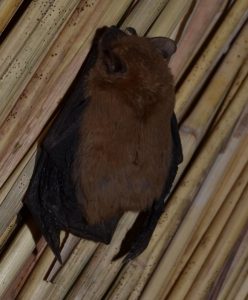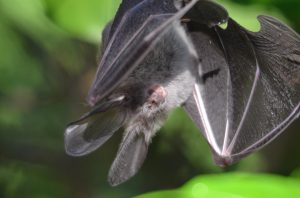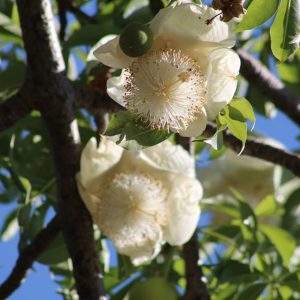Bats; Misunderstood, but very important.
Bats: the world’s only flying mammal.
Bats: Like them, be afraid of them, but they remain a very important part of our ecosystems.
Names
In Shona we call them zviremwaremwa, the Zulu and Ndebele call them ilulwane. The scientific name for a bat is chiroptera.
The world has over 1400 known bat species and Africa houses over 300 of them. The National History Museum of Zimbabwe has recorded 60 bat species in Zimbabwe. Bats range in size from the Kitti’s hog-nosed bat (also called the Bumblebee Bat) found in Southeast Asia that weighs less than a penny and measures about thirty millimeters in length, making it the world’s smallest mammal, to the flying foxes, which can have a wingspan of almost 1.5 meters. The largest bat has a wingspan of one and a half meters and is called the Giant Golden-Crowned Flying Fox and is found in the Philippines. The oldest bat is 41 years old yet their average lifespan of 20 years. Some bat species defy that rule of longevity by living beyond 30 years.

Vesper Bat. Pictre credit: Jo Na Nobrega
Types
- Microbats
Microbats are small bats, about the size of your hand that live in caves, hollowed out trees and buildings. This is the most common kind of bat, and they can be found all over the world except for the colder regions at the poles.
- Megabats
Megabats are typically larger than microbats and live in the tropics. Fruit-eating bats are one kind of megabat. They are found in dense forests in Africa, Europe, Australia and Asia
- Vampire bats
Vampire bats are part of microbats unlike any other bat, they live off blood for both food and water. They can also run, walk and jump which they use to hop on a potential prey. They are only found in Mexico, South and Central America.
Habitat
These creatures can be found in many parts of the world. They live in cities, deserts, grasslands and forests. The Miombo Woodlands in Northern Zimbabwe has been home to over 40 of these species. Bats often hang upside down in trees or caves when they roost, and often poop and pee when in flight.
Food
Bat species eat diverse diets. Some eat mostly fruit, others hunt insects, and some bat species also subsist on blood. Their diet consists of; Mosquitoes, Moths, Insects, Crickets, Beetles, Chinch bugs, Fruit, Figs, Bananas, Guava, Papaya, Nectar, Pollen and Blood (only the vampire bat). Some species of bats are carnivores, which means they eat meat. Carnivorous bats hunt and kill their prey, which include small animals such as mice, birds, lizards, frogs, fish and even other bats.
- Microbats
MicroBats are the most significant predators of night-flying insects and are called insectivores. They can eat 4 to 8 grams of insects each night. These bats like to eat beetles, moths, mosquitoes, and more. Microbats use echolocation to find their food. They come out at night and fly through the air emitting high pitched sounds that bounce off of insects and bounce back to the bat so they can locate it. They can fly around for hours at a time collecting insects from the air.
- Megabats
Megabats eat fruits and have an amazing sense of smell and can locate food. Some bats such as the spear-nosed bat will forage for fruits in groups to help increase the odds of finding food sources. Once one bat finds food it alerts other bats where it would have found food and follow each other to the food source.
- Vampire bats
Like microbats, they use echolocation. Vampire bats live off blood from animals like horses, cows, pigs and birds. They are not messy and noisy hunters; many times, the host does not even know they are there. They land on a sleeping animal, make a small cut using their teeth that the animal can’t feel and drink the blood. Vampire bats have a heat-sensing nose that can help them locate the best place on an animal to find access to their blood.
Cultural Myths
Bats are widely feared and misunderstood in many cultures because some bat species feed on blood. For that reason they have long been linked to death, darkness and vampires. But these cultural myths were used to deter people from touching, coming close to bats or their habitat, simply because bats play a vital role in the ecosystem.

Slit-faced bat from Mana Pools. Picture Credit: Daryl Martyn
Misunderstood but very important, bats have much agricultural and ecological health benefit to the African continent.
- Pollination
The often-forgotten bat pollinators are integral for night blooming flowers and crops: some of the most important crops include avocadoes, guava, baobab, and wild bananas. They are attracted to dull white, green or purple flowers with a strong musty odour.

Baobab flowers
- Seed dispersal
They disperse seeds such as cacao, nuts and figs contributing to ecosystem natural regeneration. A large colony of straw-colored fruit bats in Ghana generate at most 26 seed dispersal events per square km and over 300 000 events total each night (Wildlife Conservation Society, 2020). They deliver a rain of small seeds up to 75km from roost sites. The super powered Madagascan Rousette bat dubbed ‘Johnny Figseed’ that feeds on figs is famous for its aerial seed bombing tactics. Pity, it has been listed on the IUCN Red List as near threatened.
- Pest Control
Bats control pests especially the kind that damage crops. They are the primary predators of night flying insects (June beetles, stink bugs and corn worm moths) and much of these ranks among Southern Africa’s mostly costly agricultural and forest pests. In addition to consuming pests, it is suggested that bats protect crops from pests by ‘chasing’ away insects with their echolocation calls. In addition, bats can greatly reduce the population of irritating insects that ruin your backyard activities, such as mosquitoes, moths, wasps, beetles, gnats, midges, and mayflies. It’s of interest to note that, a single bat can eat more than 1,200 mosquito-sized insects per hour, usually eating 6,000 to 8,000 bugs each night! Isn’t this just amazing.
- Organic fertilizer
Bat dung (guano) has been highly recommended for several uses such as organic fertilizer or insect repellent despite their rare sightings. Guano is rich in phosphate and nitrate and can be used as an alternative to compound D. Mabura Caves in Zhombe East is rich in guano. Mabura bat excrement has been suggested by experts that it can also be used as gun powder. Guano in Mabura caves has however not been exploited. The reasons being a lack of investment, research and supernatural beliefs attached to the caves. Locals on the other hand have taken advantage of the rich resource by making use of the bat dung in their fields. However, there is a danger that the farmers might eradicate bat colonies by interfering with the bat’s habitat thus, it is encouraged that farmers explore ways of attracting bats to their fields.
Understanding Bats
Bats are nocturnal meaning they are creatures of the night and a favourite to only a few even though Warner Bros via their character ‘Batman’ tried to paint a positive picture of bats. We fear what we don’t know. Many still attach bat existence to witches and wizards often associating their eerie looks with darkness. Growing up in Zimbabwe folklore that had bats in them, always picture them as evil night animals together with hyenas and owls. The reasons bats appear mostly at night is because most bat species can only handle different amounts of light, they are shy and avoid people at all costs. Bats use the night as protection from predators.
Social Life
Bats often stay in a group called a colony. Colonies can be up to hundreds or thousands, making bats very social animals. A baby bat is referred to as a pup. Mothers give birth to pups while hanging upside down. Staying in close-knit groups increases bats’ reproductive success and makes it easier to rear pups. Bats are self-grooming just like cats and dogs. Some such as colonial bats groom each other. Not only does this clean their sleek fur, but it also helps to control parasites.
Many people think bats are blind, but they have very good sight. They communicate and find their way by making echolocation noises. Through producing high frequency noises, they can estimate the distance of an object using sound echoes that bounce back to them. So, while bats travel in total darkness they see using sound.
Most bats hibernate through the long, cold winter months. This is a survival mechanism that animals can use to withstand harsh weather conditions. During this state they use less energy and can survive on the fat they would have stored. However, some bats such as the spotted bat during winter migrate to where the weather is warm, and food is available.
Bats often hang upside down in trees or caves either when they roost, poop and pee. This is enables them to be out of reach of most of their enemies. Bats hang upside down so that they can fly. Being mammals, bats are built differently from birds; hence they cannot easily take off from the ground into the air. While birds will rely on gravity to take off, bats are setup differently, birds take-off and bats let go.
Bat risk
Bats have been implicated as reservoirs for multiple diseases such as rabies, Marburg virus, coronavirus and Nipah virus making them an easy target for disease-related fears. These have been linked as reason why bats receive much hate from people making them a potential target for persecution. Human encroachment into bat territory has made us vulnerable to exposure to these zoonotic diseases. The irony in this is that bats have been useful in the medical industry. Research has shown that that some bats (the common vampire bat) carry a substance in their saliva which reduces inflammation and has been manufactured and used in medicine that has helped stroke victims.
Threats to Bats
Research over the years, has revealed a sharp drop in bat species of well over 50%.
Across the world bats face many different threats. Bats have a few natural predators, some include owls, hawks and snakes. This has not threatened their population. Anthropogenic threats such as White-nose syndrome, overexploitation, habitat loss and climate change are some factors attributed to the decrease in population of bat species.
- Diseases: White-nose syndrome affects cave dwelling bats. This is a fungal disease that was discovered in 2006 and has spread at alarming rates. The fungus is transmitted from bat to bat, cave to bat and even cave to cave as people can carry the fungus on their shoes, clothing or equipment.
- Habitat loss and destruction: the current pressure on natural resources has affected the bat habitation. Roosts and foraging habitats are being lost to extensive clearing of forests and woodlands to pave way for Agriculture. Human settlements have encroached into wildlife territory. The intense pressure on resources has led to loss or modification of foraging habitats and roosts.
- Human actions: human beings pose a greater threat to bat extinction. Co-existence with bat species has been futile. Bats face multiple threats of ignorance, suspicion, pesticide poisoning, roost destruction and closure, over-exploitation and extermination. Hunting and killing of bats for meat and medicine has taken place for years now. In Nagaland India, villagers kill bats as an annual event.
Taking Action
The existence of bats is threatened and it’s time to take action.
- Education and awareness
We can change the bat narrative by changing our attitudes and behaviors towards bats. Becoming aware of the importance of the bats to the ecosystem will create conscious individuals. In other words, communities can be bat ambassador, speaking out for their habitat, their food, their sleep schedules, and educating the community.
- Reduce the use of pesticides
Limited use of pesticides and insecticides or rather making use of organic pest repellents will ensure bats always have an abundance of food.
- Don’t disturb bats habitat
Human interference disturbs hibernating bats. Avoid disturbing bats. Staying out of bat caves and mines where bats hibernate in winter will ensure bat safety.
- Grow bat friendly gardens and habitats
Creating bat friendly gardens will help bats to have a source of food. Insects from the garden will attract insects that pollinate plants and feed bats and contribute to the circle of life. Farmers are encouraged to plant crops that attract fruit-loving bats. A harmonious existence is important for both farmers and bats.
The role of bats completes and balances the ecosystem. While myths have associated them with evil, bats have proven to be a worthy friend to the environment. Their continued decline from the face of the earth will lead to an imbalance in ecosystem management. Bats are important, communities need to be educated to understand their importance.
April 17th, International Bat Appreciation Day




